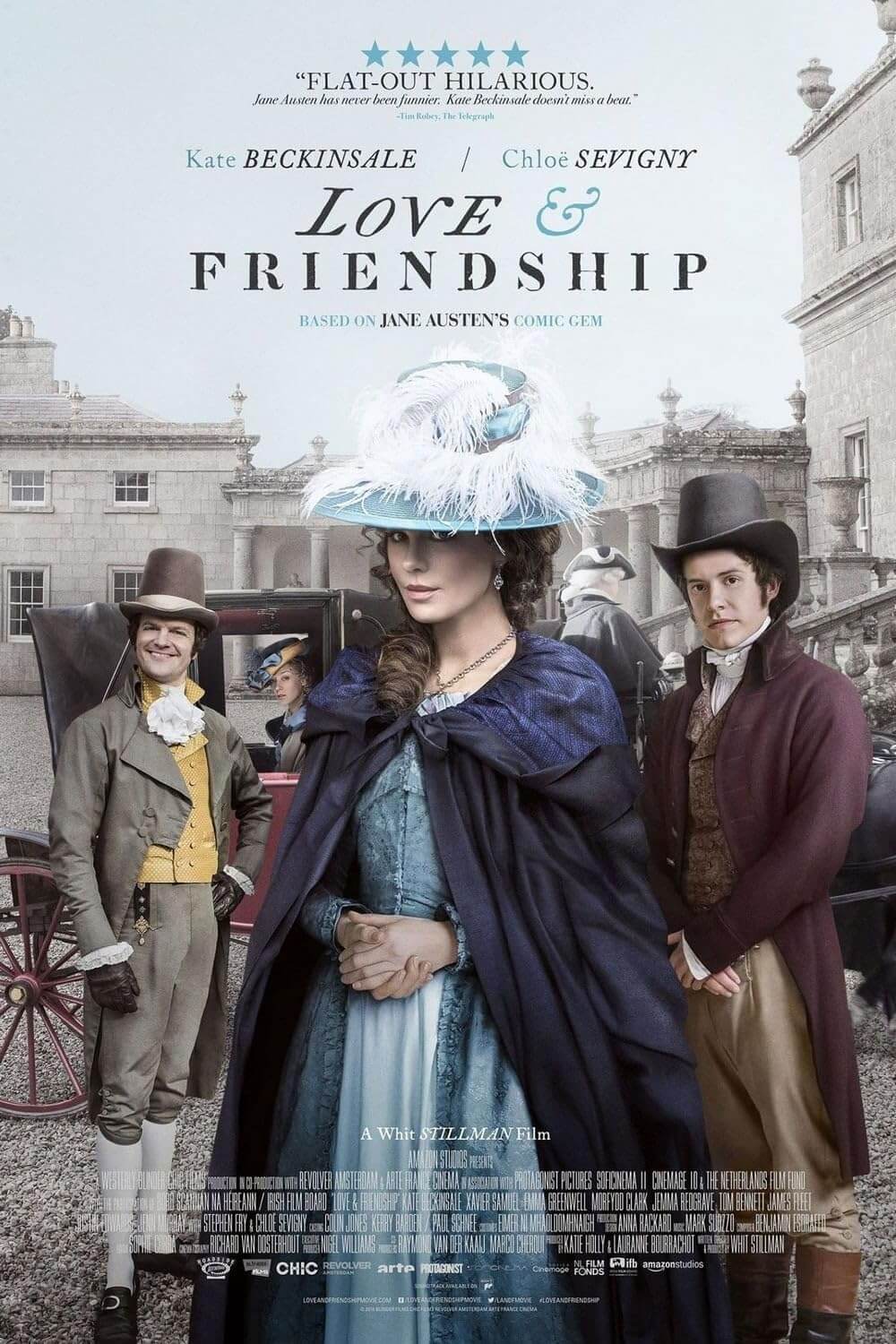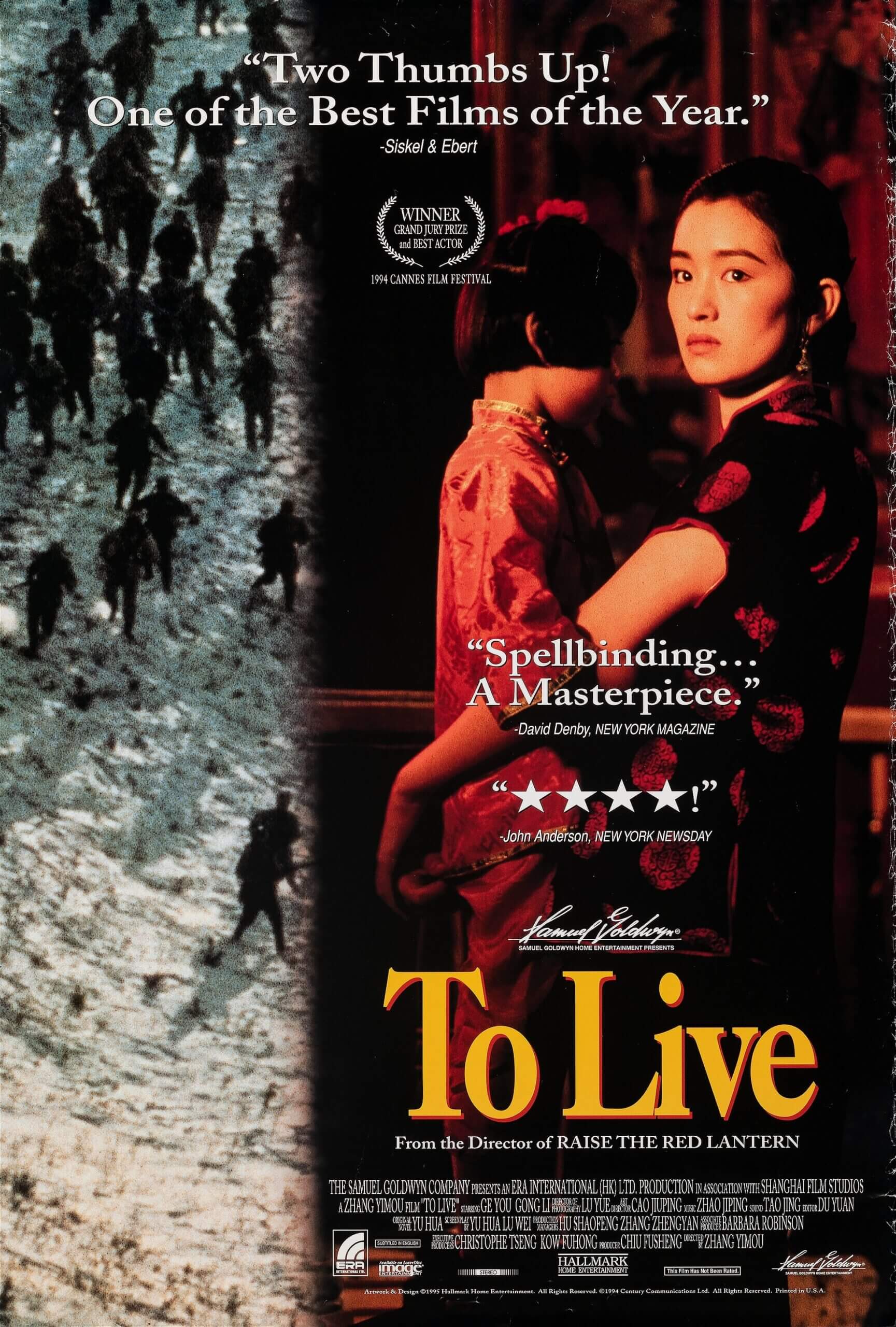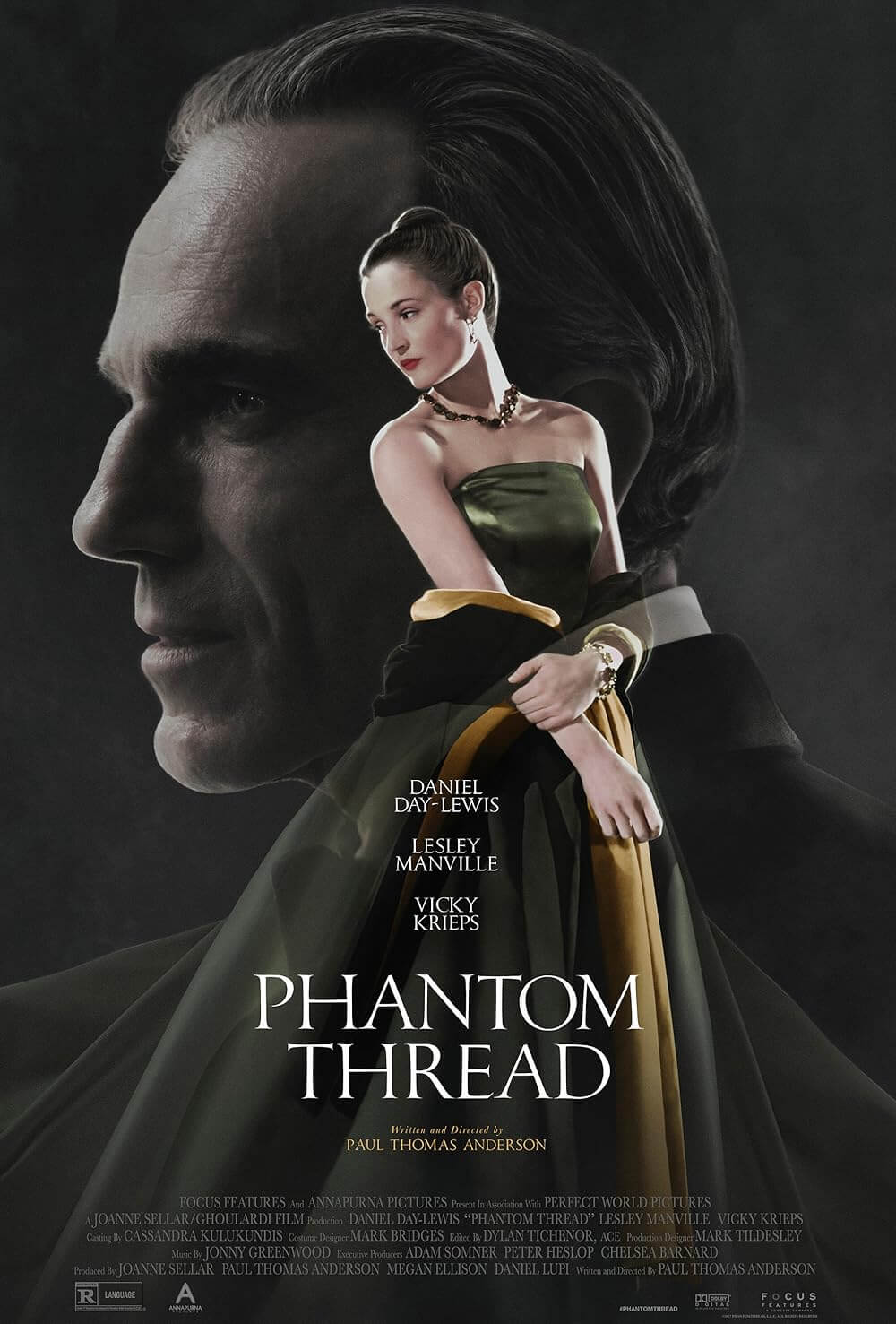The Definitives
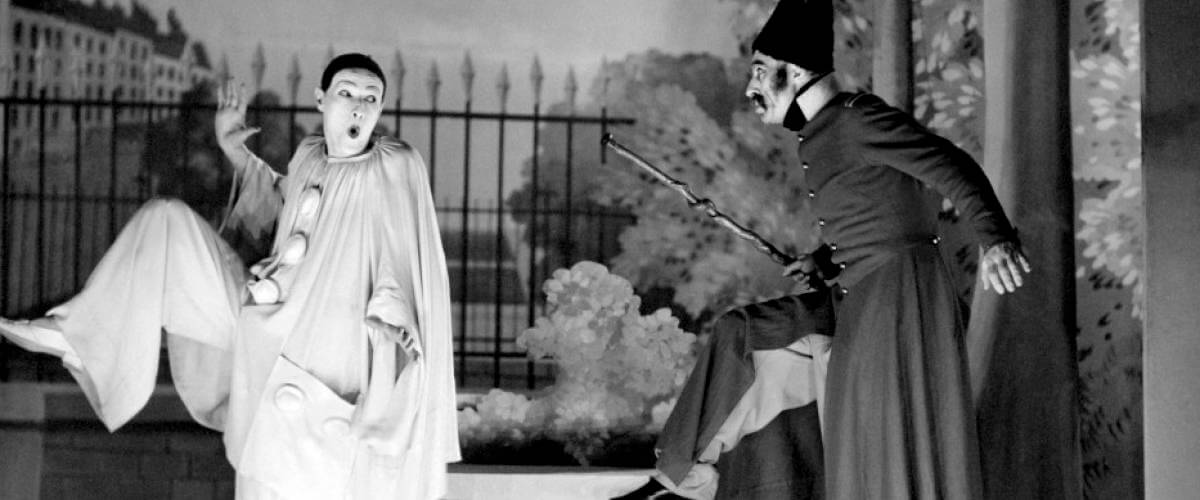
Children of Paradise
Essay by Brian Eggert |
On a Parisian thoroughfare called the Boulevard du Crime, an ongoing jubilee of sideshow performers, vendors, jugglers, strong men, prostitutes, dancers, and pickpockets fills the street. In one exhibition, a woman known as Garance sits submerged up to her shoulders in a barrel of water. Her act, called “Truth in her bath”, finds this nude French beauty looking into a mirror while onlookers gaze. Not an uncommon sort of attraction for Paris in the 1820s, her act speaks to philosophical minds familiar with the notion of the unobservable “Naked Truth”, but mostly voyeurs. After her performance, Garance strolls through the crowd and finds herself falsely accused of lifting someone’s pocket watch, until a humble mime named Baptiste, who witnessed the crime from his stage, comes to her rescue. On his platform, Baptiste acts out what really happened in a whimsical display and convinces the applauding crowd of her innocence. When freed, Garance tosses Baptiste a single rose for his reward. He instantly falls in love. And he will not be the only man in Les enfants du paradis (Children of Paradise) to fall so hopelessly for this obscure object of desire.
Few films are as grandly romantic as Marcel Carné’s 1945 picture, a rich melodrama released at the height of French cinema’s Golden Age. Filming under unimaginable conditions during the German Occupation, Carné, that unrivaled practitioner of Poetic Realism, circumvented Nazi restrictions and industry shortages to miraculously complete a three-hour epic of lavish design, then the most expensive project in the history of the French film industry. Following a cross-section of actors, criminals, derelicts, and lovers, it is a backstage story of characters whose lives epitomize the Shakespearian notion that “all the world’s a stage”. The characters are performers whose artistic portrayals reflect their lives in the wings, while the filmic characters themselves serve significant historical, political, and social representations for the picture’s initial French audiences, who, seeing the film after having narrowly survived the Occupation, found this first major release of the Liberation deeply symbolic. But the film’s historical significance never outweighs its dramatic reaches, being a timelessly tragic story about the enduring power that leads people to love and, after heartbreak, to love again.
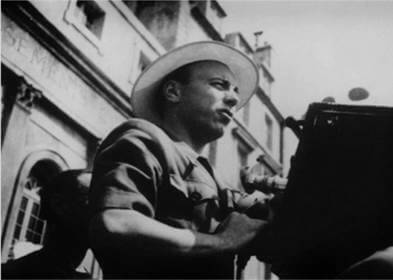 Like so many of France’s great filmmakers, Carné, the premier director of the late 1930s to mid-1940s, began his career as a film critic, writing for Hebdo-Films and Cinémonde, among other publications. After his first short film, Nogent, Eldorado du dimanche (1929), he assisted directors Jacques Feyder and René Clair until he formed a partnership with the surrealist poet Jacques Prévert, with whom he would collaborate on nearly every project over the next several years, including Le quai des brumes (1938) and Le jour se lève (1939), staples of Poetic Realism, a genre they would all but dominate. At his height, Carné worked on only the top productions with the best French actors, including Jean Gabin, Louis Jouvet, and Arletty a number of times, and often worked with the same crew, among them musician Joseph Kosma and set designer Alexandre Trauner. Not until after World War II, when future French New Wave filmmakers wrote in the Cahiers du cinema about the unreality of France’s Golden Age, would Carné’s popularity wane, only to become renowned once more by recent film historians.
Like so many of France’s great filmmakers, Carné, the premier director of the late 1930s to mid-1940s, began his career as a film critic, writing for Hebdo-Films and Cinémonde, among other publications. After his first short film, Nogent, Eldorado du dimanche (1929), he assisted directors Jacques Feyder and René Clair until he formed a partnership with the surrealist poet Jacques Prévert, with whom he would collaborate on nearly every project over the next several years, including Le quai des brumes (1938) and Le jour se lève (1939), staples of Poetic Realism, a genre they would all but dominate. At his height, Carné worked on only the top productions with the best French actors, including Jean Gabin, Louis Jouvet, and Arletty a number of times, and often worked with the same crew, among them musician Joseph Kosma and set designer Alexandre Trauner. Not until after World War II, when future French New Wave filmmakers wrote in the Cahiers du cinema about the unreality of France’s Golden Age, would Carné’s popularity wane, only to become renowned once more by recent film historians.
As the story goes, Carné, Prévert, and actor Jean-Louis Barrault met by chance in a Nice bar in the first years of the German Occupation and discussed making another film together, having previously collaborated on 1937’s Drole de drame. The director, writer, and actor each had separate goals they wanted to achieve with Les enfants du paradis: In part as a reaction to Hollywood, Carné sought to prove French cinema was capable of the same type of romantic epic Hollywood produced with Gone with the Wind; Prévert desired to explore his lingering interest in Parisian pop-culture of the nineteenth century; Barrault wanted to bring back classic French theater in a story about a mime. In another sense, Carné yearned to differentiate French filmmaking from Hollywood, in turn claiming its own identity far removed from Hollywood influence. And though the Nazis had invaded during a downturn in French cinema, the film industry itself was afforded extensive freedoms for those who remained within Occupied territory, as long as their pictures met with the strictures set by the Nazi censorship. Along with restricting any film longer than 90 minutes, the censors looked closely at contemporary stories, in case they contained any commentary about the Occupation or hidden messages about the Resistance. Filmmakers like Carné set their pictures in the past, making period pieces with contemporary parallels hidden under historical costumes and backdrops.
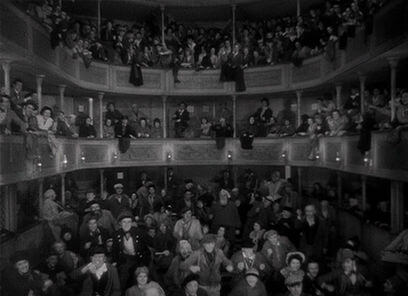 To outwit the censors, Carné resolved to make two films out of Les enfants du paradis, certain they would be shown together after the Occupation had ended. The first part, called Le boulevard du crime, takes place in the early 1820s in Paris, while the second, called L’homme blanc, occurs seven years later. The exact dates, however, are often questioned but unimportant. The film seems to take place during the July Monarchy (1830-1848) in the first half, and then contains the spirit of the Belle Époque (1890-1914) in the second, although these two periods are decades apart. Nevertheless, both are eras where theater and street crime rule. That exact dates remain ambiguous is inconsequential, as the precise definition of the subject era in history is intentionally offset by the narrative’s themes of fantasy and theatricality. In both periods, the actual Boulevard du Temple (later nicknamed Boulevard du Crime) had been a fairground atmosphere filled with shops, cabarets, performers, and criminals. After the French Revolution (1799), the government allowed two types of theaters: the government subsidized theaters of opera and high art and the privately run vaudevillian theaters, the latter type wildly popular on the Boulevard du Crime. In the film, the certified Grand Théâtre showcases sound effects and Shakespeare plays, whereas the public’sThéâtre des Funambules runs comic revues and mime acts and is fined for every spoken word or sound effect.
To outwit the censors, Carné resolved to make two films out of Les enfants du paradis, certain they would be shown together after the Occupation had ended. The first part, called Le boulevard du crime, takes place in the early 1820s in Paris, while the second, called L’homme blanc, occurs seven years later. The exact dates, however, are often questioned but unimportant. The film seems to take place during the July Monarchy (1830-1848) in the first half, and then contains the spirit of the Belle Époque (1890-1914) in the second, although these two periods are decades apart. Nevertheless, both are eras where theater and street crime rule. That exact dates remain ambiguous is inconsequential, as the precise definition of the subject era in history is intentionally offset by the narrative’s themes of fantasy and theatricality. In both periods, the actual Boulevard du Temple (later nicknamed Boulevard du Crime) had been a fairground atmosphere filled with shops, cabarets, performers, and criminals. After the French Revolution (1799), the government allowed two types of theaters: the government subsidized theaters of opera and high art and the privately run vaudevillian theaters, the latter type wildly popular on the Boulevard du Crime. In the film, the certified Grand Théâtre showcases sound effects and Shakespeare plays, whereas the public’sThéâtre des Funambules runs comic revues and mime acts and is fined for every spoken word or sound effect.
On and backstage at the Théâtre des Funambules is where Carné sets his film, in which four suitors pursue their ideal of love and truth, a street performer turned stage actress known as Garance (Arletty), who remains ever the symbol of the endless pursuit of love by frequently slipping through the fingers of those who love her. Each of the four men who fall for Garance represents a different subsection of the period in an almost impressionist view. Carné and Prévert based many of their characters on actual figures from the era: Barrault’s role as Baptiste was based on Jean-Gaspard Deburau, a legendary mime from the first half of the nineteenth century; the criminal Lacenaire (Marcel Herrand) was based on Pierre-François Lacenaire, a multiple murderer and poet who was executed in 1836 and later written of by Fyodor Dostoyevsky and Michel Foucault; Frédérick Lemaître (Pierre Brasseur) was a famous play actor written about by Alexandre Dumas and Victor Hugo. These men, as well as wealthy theatergoer Comte Édouard de Montray (Louis Salou), who was inspired by the Duc de Morny, pursue Garance but never contain her. Like Scarlett in Gone with the Wind, she is a force all her own. But Garance is also a figure who remains so elusive that men cannot help but project their desires onto her. She is willing to love each man in her way, but it’s rarely in the utterly devoted way in which they love her. And so, jealousy and resentment fill the heart of each man from their failure to contain love itself, as opposed to simply taking pleasure from what love they have.
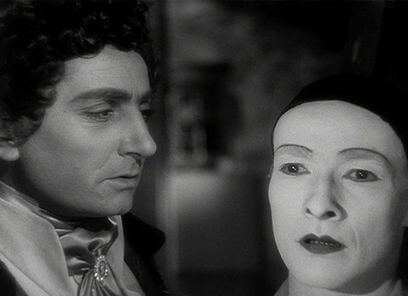 When the film opens, Garance is with Lacenaire until Baptiste steals her away during a tense confrontation at a local tavern. She joins him at the Funambules, where the lovelorn Nathalie (Spanish-born actress María Casarès) pines for Baptiste and believes she is fated to be with him. Even so, Baptiste wants Garance, who does not fall instantly in love with Baptiste as he does for her, and so the mime laments his ill fortune and pulls away; for Baptiste, it must be all or nothing, though Garance is not above engaging in the act of love for pleasure’s sake. Instead, Garance takes to Frédérick, who like Baptiste soon becomes a famous actor, but he too demands more from Garance than she will give. Only when she is accused of some involvement in an attempted murder committed by Lacenaire does Garance call on a wealthy admirer from her audience, Édouard, who professed his adoration backstage and promised to help should she ever need it. In their arrangement, which lasts the seven years that transpire between films, Garance is not expected to love Édouard, only to remain perceptibly his as they travel the world together. When Garance returns to Paris, she finds Baptiste has settled for and down with Nathalie, and together they have had a child. She now wants Baptiste and loves him, although Nathalie takes steps to prevent Garance from disturbing her predestined marriage. At the same time, Frédérick and Lacenaire band together against Édouard, who in their understanding has stolen Garance away. Lacenaire eventually murders Édouard in a Turkish bath. At last, Baptiste abandons his family to visit Garance for a single night’s embrace. Nathalie confronts them, so Garance flees the city, which has erupted in Carnival celebrations. Baptiste can only pursue in vain, held back by jovial Carnival crowds as he watches Garance’s carriage disappear into the throng.
When the film opens, Garance is with Lacenaire until Baptiste steals her away during a tense confrontation at a local tavern. She joins him at the Funambules, where the lovelorn Nathalie (Spanish-born actress María Casarès) pines for Baptiste and believes she is fated to be with him. Even so, Baptiste wants Garance, who does not fall instantly in love with Baptiste as he does for her, and so the mime laments his ill fortune and pulls away; for Baptiste, it must be all or nothing, though Garance is not above engaging in the act of love for pleasure’s sake. Instead, Garance takes to Frédérick, who like Baptiste soon becomes a famous actor, but he too demands more from Garance than she will give. Only when she is accused of some involvement in an attempted murder committed by Lacenaire does Garance call on a wealthy admirer from her audience, Édouard, who professed his adoration backstage and promised to help should she ever need it. In their arrangement, which lasts the seven years that transpire between films, Garance is not expected to love Édouard, only to remain perceptibly his as they travel the world together. When Garance returns to Paris, she finds Baptiste has settled for and down with Nathalie, and together they have had a child. She now wants Baptiste and loves him, although Nathalie takes steps to prevent Garance from disturbing her predestined marriage. At the same time, Frédérick and Lacenaire band together against Édouard, who in their understanding has stolen Garance away. Lacenaire eventually murders Édouard in a Turkish bath. At last, Baptiste abandons his family to visit Garance for a single night’s embrace. Nathalie confronts them, so Garance flees the city, which has erupted in Carnival celebrations. Baptiste can only pursue in vain, held back by jovial Carnival crowds as he watches Garance’s carriage disappear into the throng.
That this film was made during the Occupation is extraordinary. The production suffered from material shortages, limited transportation, violent storms, regular power outages, and restricted supplies of film stock, all amid rumors of Allied invasions, and all endured under the brazen ambition of Carné. In spite of his constraints, Carné somehow assembled 1,500 extras and built the largest set ever erected for a French film by actually reconstructing the nineteenth century’s Boulevard du Crime. This alone required literal tons of limited resources, such as concrete, glass, rock, and plaster. The necessary crew for a production of this size could not possibly come without mixed backgrounds. One crewmember fought for the Resistance and found himself in Gestapo custody; one actor, a Nazi sympathizer, fled to work for the regime and his role was recast. The names of Jewish crewmembers were changed to French names, as the Vichy government refused to allow Jews to work; as a result, the designer Trauner and scorer Kosma worked in secret, later to be credited as “collaboration dans le clandestine”. The film began shooting in August 1943 at the Victorine Studios in Nice, but delays left Pathé to take over. When word of an impending Allied landing in Italy circulated, the production relocated its sets to Paris, but eventually returned to Nice and completed just before the landing at Normandy.
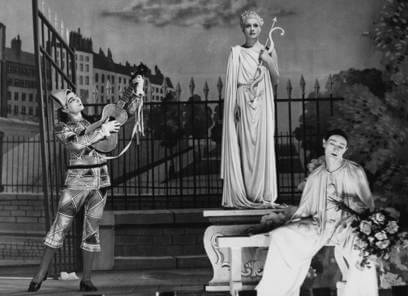 Wartime conditions notwithstanding, Les enfants du paradis is a luxurious production of elaborate sets, carriages, historical costumes, expansive interiors, fantastical theater sets, expressive stage costumes, crowded streets, meticulous period details, and painterly ornamentation. All this assembled at a time when the bare necessities were in short supply. Trauner based his designs on nineteenth-century photos and prints for authenticity, but his designs resist absolute historical accuracy in favor of strange, almost surreal elongated angles that emphasize the film’s theatricality. Some of Trauner’s designs worked as trompe-l’œil but were actually much smaller than they appear. The Boulevard du Crimeset, for example, is reduced in its accurate scale as it recedes into the distance; Carné hired dwarves to ride in miniature carriages and populate the streets to construct the illusion of a greater expanse between the foreground and background. Other sets demonstrated Carné’s remarkable drive, such as the Funambules’ working stage, audience, balcony, and backstage goings-on, populated with no end of overflowing extras. Even with the absolute audacity of this production, what remains so fascinating about these facets is how carefully they balance on the contour between realism and artistic embellishment.
Wartime conditions notwithstanding, Les enfants du paradis is a luxurious production of elaborate sets, carriages, historical costumes, expansive interiors, fantastical theater sets, expressive stage costumes, crowded streets, meticulous period details, and painterly ornamentation. All this assembled at a time when the bare necessities were in short supply. Trauner based his designs on nineteenth-century photos and prints for authenticity, but his designs resist absolute historical accuracy in favor of strange, almost surreal elongated angles that emphasize the film’s theatricality. Some of Trauner’s designs worked as trompe-l’œil but were actually much smaller than they appear. The Boulevard du Crimeset, for example, is reduced in its accurate scale as it recedes into the distance; Carné hired dwarves to ride in miniature carriages and populate the streets to construct the illusion of a greater expanse between the foreground and background. Other sets demonstrated Carné’s remarkable drive, such as the Funambules’ working stage, audience, balcony, and backstage goings-on, populated with no end of overflowing extras. Even with the absolute audacity of this production, what remains so fascinating about these facets is how carefully they balance on the contour between realism and artistic embellishment.
Carné explores the playfulness between reality and theatricality, between theater and film, and between art and the audience’s experience with it. The film’s characters act out a narrative structure designed to connect with the moviegoing audience by occupying non-traditional dramatic types. Whereas royalty and politicians are typically the stuff of high drama, in addition to their historical detail, Carné and Prévert approach realism by using lowly performers, criminals, and hard-luck cases. And yet, their realistic characters are written with ironic and melodramatic flourishes, hence the genre’s name: Poetic Realism. The film tells us in the first scenes that “truth” remains three-quarters submerged in a barrel, and therefore suggests that in the absence of truth we should seek out something more satisfying, namely art and theatricality. This is represented in technical and thematic terms, as tracking shots follow, discover, and look through the proverbial “keyhole of life” to find the film’s melodrama. But for Baptiste, life and theater are the same, and other characters seem to live like this as well, playing their roles not as real-life characters, but as performances they were written to play. Prévert’s dialogue describes characters who speak in deliberate, ornate clichés, but they use the same language to transform those clichés into rich verbal irony, their method of communicating grand even if they themselves are not. As a result, Les enfants du paradis acknowledges its status as art by emphasizing this theatrical type of performance and underlining how film is a modern extension of theater. On another level, the film draws parallels between the restrictions of the Théâtre des Funambules and contemporary French cinema as restricted by the Occupation. The film’s audience, then, is closely connected with that of the Funambules theater, sitting “up in the gods”—those veritable children of this filmic paradise, watching dreams, not reality, unfold before them.
 This theme is reinforced visually when the first and last shots of the narrative show the curtain rising and falling on the drama within. Theater is the structuring metaphor of Les enfants du paradis through Carné’s use of the curtain, but also through the performances of pantomime, Lemaître’s larger-than-life acting on and off stage, and the melodrama of the story. Such stage drama bleeds outside of its margins into real life, as existence on and offstage in the film is reflective; the characters occupy fixed roles in both worlds. Baptiste has his onstage persona in black-and-white mime garb; offstage he plays a lovelorn and tormented artist. A poet by trade, Lacenaire wears dandy clothes but dons a devilish mustache, and he speaks about the world as only a poet could, though his elegance is contrasted by his vicious criminality. Frédérick never seems out of costume, as before and after his performances he parades about in Othello makeup or his eye-patched Robert Macaire costume, always orating like a character in a play. Édouard seems to have merged with his costume in another way altogether, carefully grooming his beard and affluent style, though he too becomes a jealous lover swept away by Garance. Another character, Fil de Soie (Gaston Modot), fronts as a blind beggar on the street, but at his neighborhood tavern his act is over, and he sees more than most. Nearly every main character in the film has a kind of duality, and this is never truer than with Garance, who appears at first as a festival attraction, while her offstage persona remains just as imagined; it is precisely the unknown which lies beneath Garance’s façade that entrances men so.
This theme is reinforced visually when the first and last shots of the narrative show the curtain rising and falling on the drama within. Theater is the structuring metaphor of Les enfants du paradis through Carné’s use of the curtain, but also through the performances of pantomime, Lemaître’s larger-than-life acting on and off stage, and the melodrama of the story. Such stage drama bleeds outside of its margins into real life, as existence on and offstage in the film is reflective; the characters occupy fixed roles in both worlds. Baptiste has his onstage persona in black-and-white mime garb; offstage he plays a lovelorn and tormented artist. A poet by trade, Lacenaire wears dandy clothes but dons a devilish mustache, and he speaks about the world as only a poet could, though his elegance is contrasted by his vicious criminality. Frédérick never seems out of costume, as before and after his performances he parades about in Othello makeup or his eye-patched Robert Macaire costume, always orating like a character in a play. Édouard seems to have merged with his costume in another way altogether, carefully grooming his beard and affluent style, though he too becomes a jealous lover swept away by Garance. Another character, Fil de Soie (Gaston Modot), fronts as a blind beggar on the street, but at his neighborhood tavern his act is over, and he sees more than most. Nearly every main character in the film has a kind of duality, and this is never truer than with Garance, who appears at first as a festival attraction, while her offstage persona remains just as imagined; it is precisely the unknown which lies beneath Garance’s façade that entrances men so.
Arletty, born Leonie Bathiat, is the epitome of sexualized sophistication, although at age 44 when filming began, the actress is not what we think of as the prototypical screen sex symbol. Cast against type, she does not at first seem to be the Helen of Troy these characters believe her to be. Regardless, she has an ageless quality about her that serves her character. Garance loves love effortlessly, and she experiences every kind of love with equal pleasure, but rarely with an intense involvement. She represents a conflict between virgin and courtesan, ignorance and knowledge in that she responds to her suitors; to those in the film who love her, she is a muse, lover, and fantasy who facilitates her men to understand themselves. Yet we know so little about her. Perhaps because she has no true identity of her own, only that which the men in her life assign her. She accepts this lot, rather than inventing it herself. “They call me Garance,” she explains in an early scene. At this, someone remarks what an odd name it is. “They say it’s a flower,” she responds. More than any other character in Les enfants du paradis, Garance assumes an identity that’s been put upon her, and occupies it without complaint. “Oh, I love everyone,” she remarks. And she’s willing to take on whatever fantasy her lover desires; when she wraps a blanket around herself before Baptiste in her bedroom, she becomes an Orientalized Indian woman in a sari, or maybe an escort in a Turkish bath. Carné himself conceived Garance from elements of other actresses: Marlene Dietrich in the films of Joseph von Sternberg; Merle Oberon in The Private Lives of Henry VIII; Vivien Leigh in Gone with the Wind. Therefore, even with Arletty’s intangible but undeniable onscreen presence, in symbolic terms, Garance is a vacuum to be filled by the men in her life.
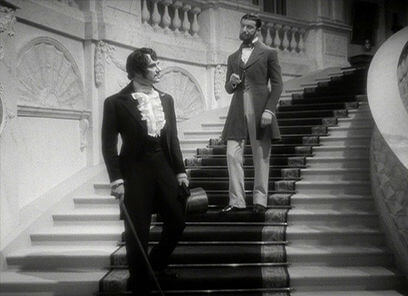 The dramatic irony of Les enfants du paradis is that, regardless of Garance’s willingness to be their fantasy, these men cannot connect with her; though each man could have her, they each want their unbridled devotion returned with equal profundity. In a way, then, Garance too is a femme fatale of sorts, who brings inevitable doom to those who fall in love with her. These suitors all believe themselves and their love so unique, but to Garance, who has seen and done it all, they are all the same. She wants only to love. Divisive of the typical melodrama schema then, Carné’s film is a melodrama about men, and in that, reverses the gender roles of its male characters. Throughout their careers, both Carné and Prévert employ intentional gender ambiguity, the director openly homosexual. Gender is represented as an aspect of the mask, the ongoing performances carried out by the male characters in the film, all of whom bear conspicuous homosexual undertones and insecurities about their inability to command Garance’s love. Baptiste is effeminized throughout the picture in his delicate facial features and makeup; Lacenaire, followed by his devoted manservant Avril (Fabien Loris), was based on a criminal who killed a male prostitute in a Turkish bath; the ostentatious Frédérick shares a curiously close bond with Lacenaire; Édouard, in his ostensible marriage of convenience with Garance, perhaps chooses her as an unattainable ideal because he has placed her on a pedestal, where he has unconsciously convinced himself he cannot go.
The dramatic irony of Les enfants du paradis is that, regardless of Garance’s willingness to be their fantasy, these men cannot connect with her; though each man could have her, they each want their unbridled devotion returned with equal profundity. In a way, then, Garance too is a femme fatale of sorts, who brings inevitable doom to those who fall in love with her. These suitors all believe themselves and their love so unique, but to Garance, who has seen and done it all, they are all the same. She wants only to love. Divisive of the typical melodrama schema then, Carné’s film is a melodrama about men, and in that, reverses the gender roles of its male characters. Throughout their careers, both Carné and Prévert employ intentional gender ambiguity, the director openly homosexual. Gender is represented as an aspect of the mask, the ongoing performances carried out by the male characters in the film, all of whom bear conspicuous homosexual undertones and insecurities about their inability to command Garance’s love. Baptiste is effeminized throughout the picture in his delicate facial features and makeup; Lacenaire, followed by his devoted manservant Avril (Fabien Loris), was based on a criminal who killed a male prostitute in a Turkish bath; the ostentatious Frédérick shares a curiously close bond with Lacenaire; Édouard, in his ostensible marriage of convenience with Garance, perhaps chooses her as an unattainable ideal because he has placed her on a pedestal, where he has unconsciously convinced himself he cannot go.
For French audiences just free of Nazi rule, Garance and her perspective on love embodied a kind of freeform poetry toward life, how art and love liberate the oppressed, whereas the film’s conclusion suggests that life goes on after heartbreak. From this, Garance has been interpreted as the Spirit of Resistance in Occupied France, pursuing love wherever it is available but unwilling to be bound to a single man who wants control over her. In contrast, then, Nathalie must symbolize compliance within the Vichy regime, as she knows she’s being walked over, but does nothing to defend herself. Together, the fates of the male characters suggest hints of rebellion: Lacenaire seems to invite death in defiance of the establishment, namely Édouard; Frédérick, too, humorously defies his authors at the Grand Théâtre by ad-libbing from their play onstage and winning the crowd; this is much like Baptiste, whose pantomime art reaches into the traditions of the past, specifically France before the Occupation, to devoted audiences. Les enfants du paradis is a deceptively defiant, intensely symbolic film in which several men each love a woman who represents Truth or, in simpler terms, un-Occupied France, and how through their efforts to obtain her she slips through their fingers. The Spirit of Frace cannot be contained, Carné seems to say.
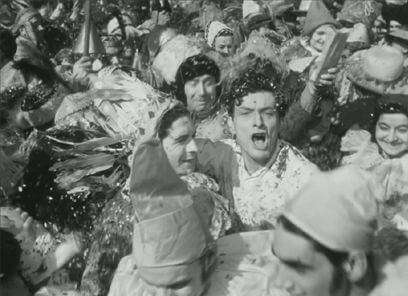 Carné’s romanticism toward the film’s eras in French history instilled a crucial link between audiences and the narrative ingrained in Parisian culture before Nazi control. The past plays a decisive role in the film itself, as Le boulevard du crime feels at times like a rehearsal for the events in L’homme blanc. The second part delves into a reenactment of history and memory for the characters and the events in the first part, as Baptiste remembers how Garance once stood before him, willing to bed down with him, but with ignorance, he refused because she did not love him on an equal plane. The characters in L’homme blanc remember simpler times from Le boulevard du crime, which now seem distant and idealized, just as prewar France would seem to those who endured and survived the Occupation. It is as Nathalie says, “embellished by memory,” which in turn is how audiences viewed the entire experience of Les enfants du paradis, as part of some dream lived long ago in a distant and fondly remembered past. Even as ill-fated characters look backward, the ending is hopeful for at least one of these otherwise hopeless men, in that as Garance leaves, Baptiste chases after her and finds himself lodged in Carnival processions going on around him. He continues to cry out as her carriage disappears, and as the curtain closes, perhaps Baptiste will begin dancing along with the crowd and in time forget. This is the French fortitude Carné’s production channeled so well, and to which Liberation crowds clung to and remembered upon viewing.
Carné’s romanticism toward the film’s eras in French history instilled a crucial link between audiences and the narrative ingrained in Parisian culture before Nazi control. The past plays a decisive role in the film itself, as Le boulevard du crime feels at times like a rehearsal for the events in L’homme blanc. The second part delves into a reenactment of history and memory for the characters and the events in the first part, as Baptiste remembers how Garance once stood before him, willing to bed down with him, but with ignorance, he refused because she did not love him on an equal plane. The characters in L’homme blanc remember simpler times from Le boulevard du crime, which now seem distant and idealized, just as prewar France would seem to those who endured and survived the Occupation. It is as Nathalie says, “embellished by memory,” which in turn is how audiences viewed the entire experience of Les enfants du paradis, as part of some dream lived long ago in a distant and fondly remembered past. Even as ill-fated characters look backward, the ending is hopeful for at least one of these otherwise hopeless men, in that as Garance leaves, Baptiste chases after her and finds himself lodged in Carnival processions going on around him. He continues to cry out as her carriage disappears, and as the curtain closes, perhaps Baptiste will begin dancing along with the crowd and in time forget. This is the French fortitude Carné’s production channeled so well, and to which Liberation crowds clung to and remembered upon viewing.
Although his production finished in time to be the last rebellious film(s) of the Occupation, Carné insisted they wait to release them as a whole, making the conjoined parts of Les enfants du paradis, shown together without an intermission,the first major film of the Liberation. Debuting at the Palais de Chaillot in Paris on March 9 of 1945, nearly a year after the German Occupation was over but not before the war’s end, the film reached audiences at a time when French cinemas were teeming with English-language films to appease the Allied forces now protecting Paris, which were otherwise banned by the Vichy government and therefore now widely attended. For Carné and more importantly for French filmgoers, the film stood as evidence that French artistry, a sort that hadn’t been this majestic since before the war, was still very much alive and possible. For the industry, it demonstrated how French films could contend with foreign competition. Its first Paris run lasted for more than a year, earning 41 million Francs. The film’s popularity continued for the next decade until France experienced a cultural resurgence following WWII, and New Wave critics in the Cahiers du cinema began to regard classicized pictures like this as too contingent on the past and its decorum. But Les enfants du paradis has survived such criticisms, as revivals and restorations in the past several decades have returned Carné’s masterwork into the pantheon of great French cinema.
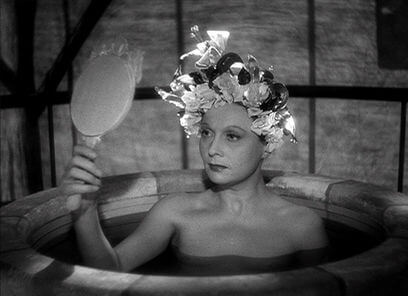 What remains for contemporary viewers is not merely the historical significance of the film, nor even just the fascinating story of its production under unbelievable conditions, but the power of the narrative that immerses us in a bath of moving melodrama. Strange that a mode not typically concerning men has such a concentration of male perspectives, yet also represents its central male characters as children pining over their perceived paradise in Garance, who views their pursuits as little more than the next turn in the play of life. And then there is poor Nathalie; in spite of her supposed association with the Vichy regime, revisiting the film today one cannot help but feel for her, abandoned with a fatherless child, her love never to be returned, yet remaining so certain that she and Baptiste belong together. Every character experiences severe longing for an idyll and Garance personifies this notion through her multifaceted presence as an archetypal female object, but also the symbolic spirit of the human condition to endure through the unimaginable and find love again. The film maneuvers around and reformats our expectations for the usual costume drama, as the entire picture seems to exist in an other-worldly place of dreams and perceived realities.
What remains for contemporary viewers is not merely the historical significance of the film, nor even just the fascinating story of its production under unbelievable conditions, but the power of the narrative that immerses us in a bath of moving melodrama. Strange that a mode not typically concerning men has such a concentration of male perspectives, yet also represents its central male characters as children pining over their perceived paradise in Garance, who views their pursuits as little more than the next turn in the play of life. And then there is poor Nathalie; in spite of her supposed association with the Vichy regime, revisiting the film today one cannot help but feel for her, abandoned with a fatherless child, her love never to be returned, yet remaining so certain that she and Baptiste belong together. Every character experiences severe longing for an idyll and Garance personifies this notion through her multifaceted presence as an archetypal female object, but also the symbolic spirit of the human condition to endure through the unimaginable and find love again. The film maneuvers around and reformats our expectations for the usual costume drama, as the entire picture seems to exist in an other-worldly place of dreams and perceived realities.
Widely regarded as the greatest French film ever made, they say Les enfants du paradis is always playing somewhere in a Paris moviehouse. Such mysticism is not purveyed without cause, as through Carné’s orchestration of Prévert’s poetic dialogue and Barrault’s expressive gestures and Arletty’s almost trancelike persona, the film presents a cultural significance often likened, appropriately, to Gone with the Wind. Though many of its themes call to mind the parallels of the film’s creation under the German Occupation, the picture’s length and immaculate production values lead to a narrative elusiveness that, because of its creation at such a vital point in French history, invites and even demands varied readings linking it to French postwar identity. But in this massive stage upon a stage, the drama opens itself up to a wide range of interpretation and construal, just as Garance does for her suitors. Perhaps this is the real achievement made by Carné. In his enriched degree of multi-dimensional storytelling, the prevailing and inevitable need for political and representational analyses becomes secondary to a heartrending tale of artists, courtesans, miscreants, and the passing love among them.
Bibliography:
Carné, Marcel. La Vie à belles dents. Paris: Belfond, 1989.
Chazak, Robert. Marcel Carné. Paris: Seghers, 1965.
Forbes, Jill. Les enfants du paradis. (BFI Modern Classics). London: British Film Institute, 1997.
Turk, Edward Baron. Child of Paradise: Marcel Carné and the Golden Age of French Cinema. Cambridge, MA: Harvard University Press, 1989.
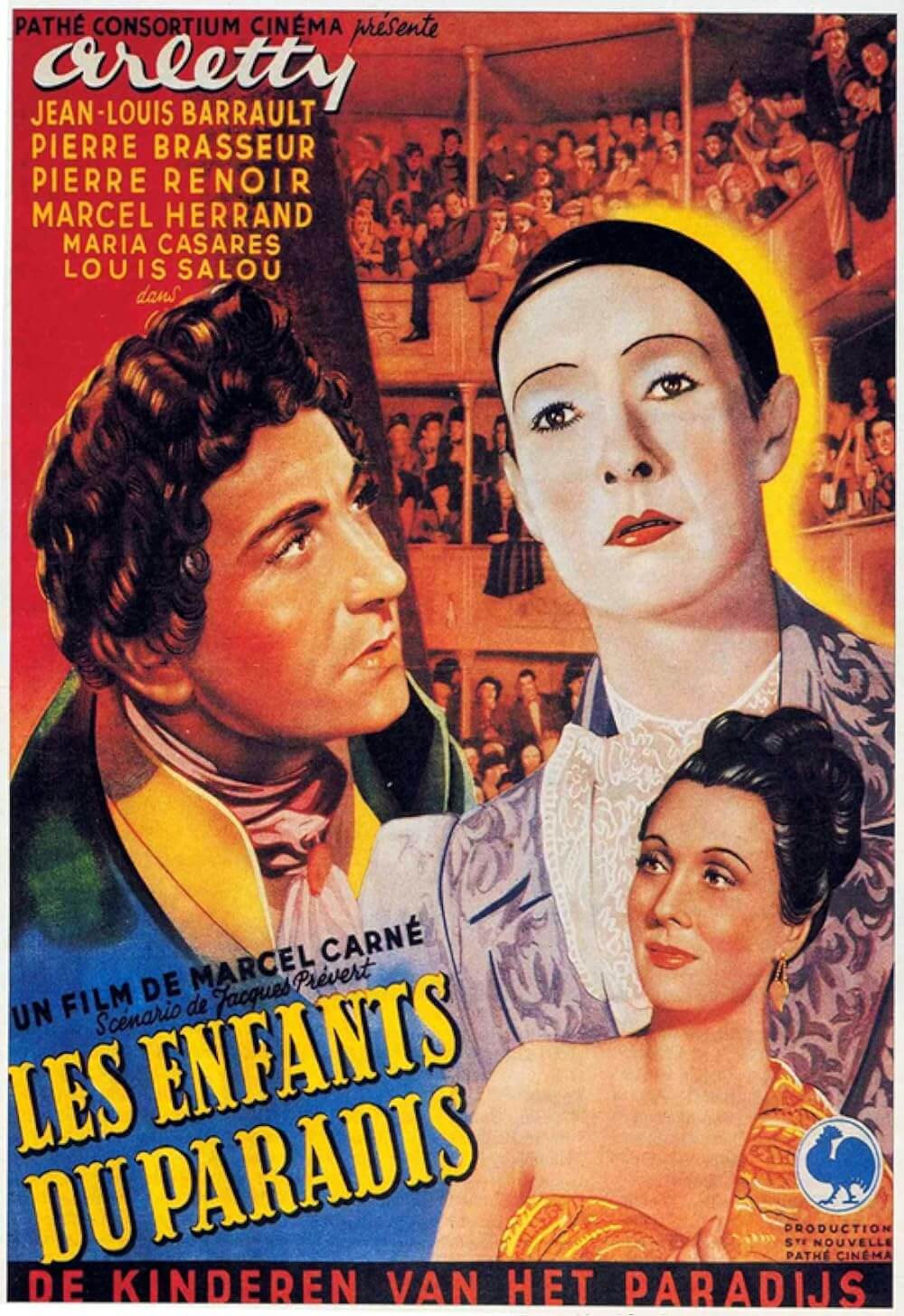
Thank You for Supporting Independent Film Criticism
If the work on DFR has added something meaningful to your love of movies, please consider supporting it.
Here are a few ways to show your support: make a one-time donation, join DFR’s Patreon for access to exclusive writing, or show your support in other ways.
Your contribution helps keep this site running independently. However you choose to support the site, please know that it’s appreciated.
Thank you for reading, and for making this work possible.
Brian Eggert | Critic, Founder
Deep Focus Review


